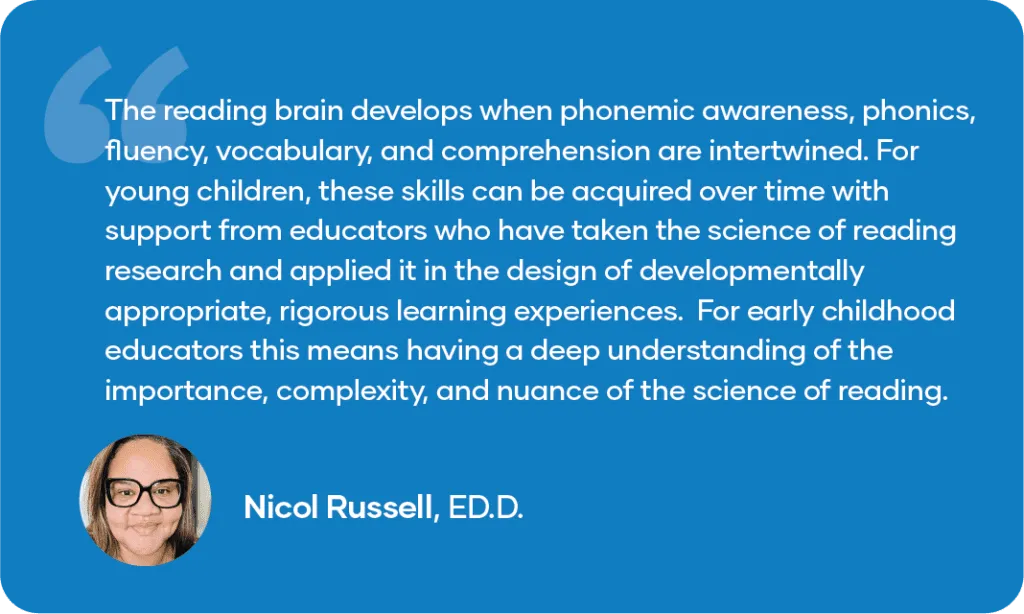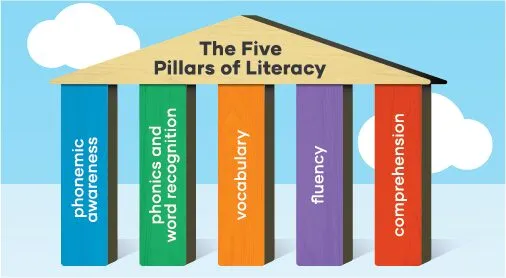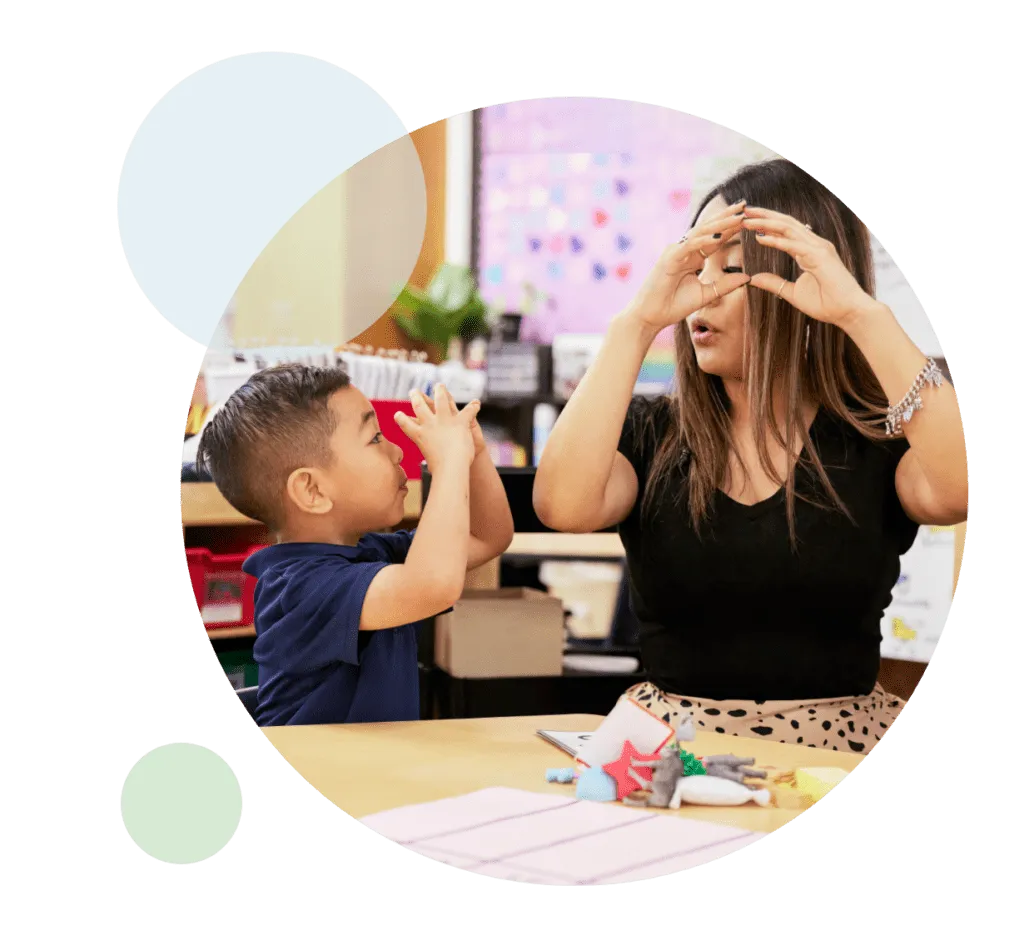
Inspire and Empower Educators in the Science of Reading
Gain insights from the leader in early childhood education and trusted source for science of reading-backed solutions for educators and early learners.
Curriculum
Explore our play-based, whole-child curriculum that includes explicit, daily literacy instruction rooted the science of reading.
Professional Development
Bring the science of reading body of research to life in your program in direct to program courses, on-demand courses, and in our robust certification program.
FREE Science of Reading Resources

Webinar Series (5)
Dive into the five pillars of the science of reading in an early childhood setting and explore how early literacy programs can help children develop pre-reading skills.

eBook
Learn how to leverage five everyday practices to promote essentials skills in language and literacy in your program.

Blogs
Explore topics like the seven common myths about the science of reading and what tiny habits can lead to big results, and much more.
Science of Reading in Action
Fort Worth ISD was focused on improving children’s language and literacy skills – and they did it with a partnership with Teaching Strategies.
Talk to an early childhood specialist about Teaching Strategies and the science of reading.
FAQs
The science of reading refers to the extensive, growing body of research that helps explain how we learn to read.
The science of reading is not a specific curriculum, a single instructional strategy, or an isolated intervention.
The science of reading identifies five major components of an effective literacy program:
- phonemic awareness
- phonics and word recognition
- fluency
- vocabulary
- comprehension
Phonemic awareness is the ability to hear and manipulate the individual sounds of spoken language.
Phonics refers to the systematic connection between sounds and the corresponding letters that represent those sounds (also known as phoneme/grapheme correspondence). Because not all words can be “sounded out,” children also benefit from being able to recognize some irregular words by sight
Fluency refers to the ability to read (words, phrases, sentences, and books and stories) accurately, with speed and expression.
Vocabulary refers to word meaning—knowing what a word or concept means in different contexts.
Comprehension refers to understanding and interpreting what is read or said and is the ultimate goal of reading.
- The science of reading is a product that you can purchase.
- The science of reading identifies one specific best curriculum for teaching reading.
- The science of reading identifies a specific intervention strategy for supporting children who struggle to learn to read.
- The science of reading says that phonics skills are the lone important component of effective reading instruction.
- The science of reading says that preschool and prekindergarten programs should adopt phonics-heavy reading instruction.
- The science of reading is derived entirely from brain-based (medical) research while discounting practical evidence from classrooms and testimonial evidence from teachers, children, and families.
- The science of reading has laid to rest, once for all, research into and discussion about how to best teach children to read.
